10-month challenge

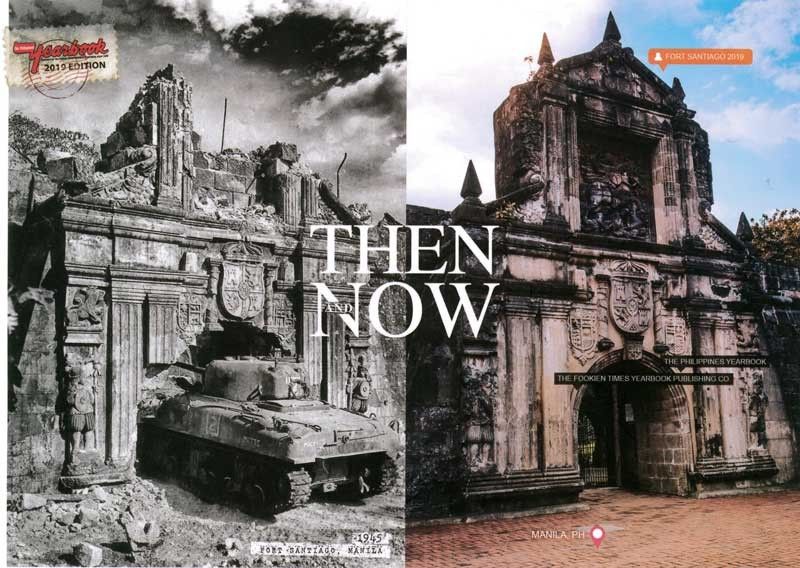
My Facebook page started 2019 with numerous postings of the 10-year challenge. People sent in pictures of themselves or places of importance to them that showed dramatic or funny changes over the decade.
I worked on a project last year with a similar goal. This was for the Philippine Yearbook, 2019 edition. My publishers, Gracie and Vernon Go, had asked me to be the editor of the edition early last year. Vernon wanted a picture book filled with compelling images of the structures and sites of memory, images that would resonate across a wide demographic and across most age groups. He gave the editions apt title: “Then and Now.”
It was a fun 10 months of scouring archival images and stories of past landmarks. I relied on a great editorial team led by managing editor Ditas Bermudez and associate editor Trish Morente. We then had to match these old images with current photography, often difficult because of how much our cities have grown around these landmarks. Up to the task was our chief photographer Joel Garcia, with additional photography by Greg Mayo.
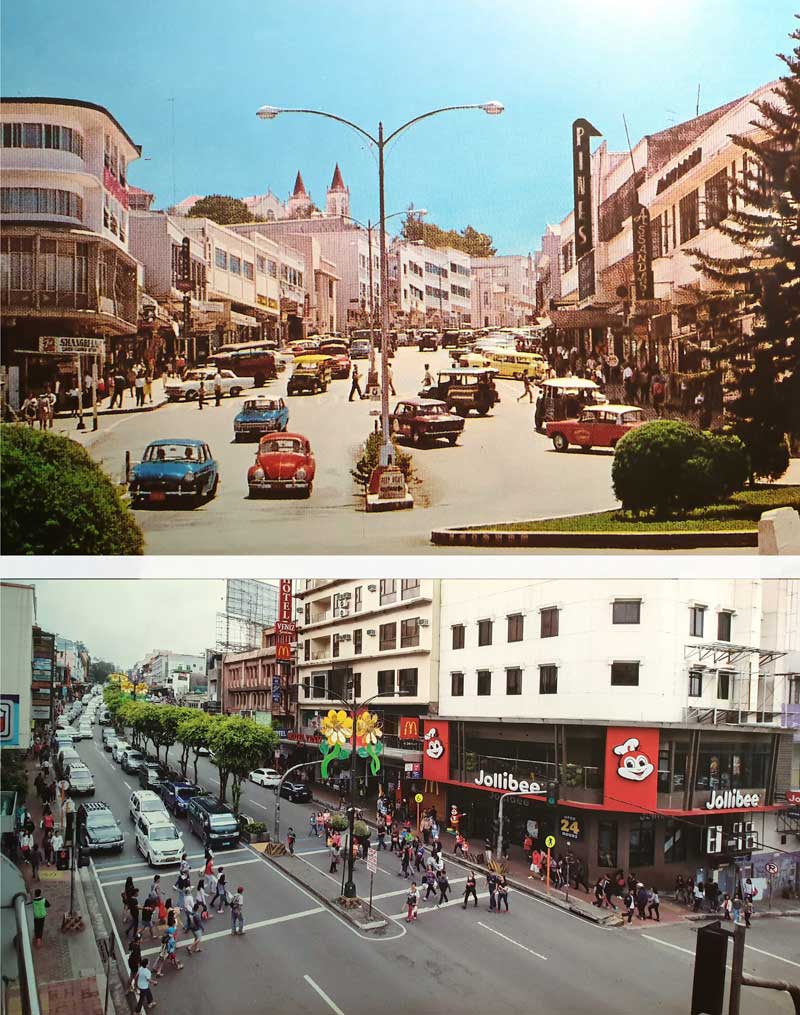
Baguio Session Road, as seen in the 1960s and today, still anchors city life along with Burnham Park nearby.
We also recruited writers and historians for essays connected with the subjects. We managed to rope in Gemma Cruz Araneta, Cebuano historian Jose Eleazar Bersales, Lou Guopal, Marawi-based Samira Ali Gutoc-Tomawis, and Karen Ann-Hipol. Key archival images were provided by John Tewell, whose postings on social media, like Lou’s, are popular with everyone into history, conservation and nostalgia with our beautiful past.
Aside from editing the edition, I also provided an introductory essay, from which I excerpt musings on the nature of sharing images, the old way and the new way:
Before the advent of digital social media, the most popular way to send messages to friends and loved ones was via postcards. Longer communications involved the now lost art of letter writing. With both options images were most often involved. The postcard was the image and text holder itself, while letter envelopes where the right size for small photographs to be tucked in.
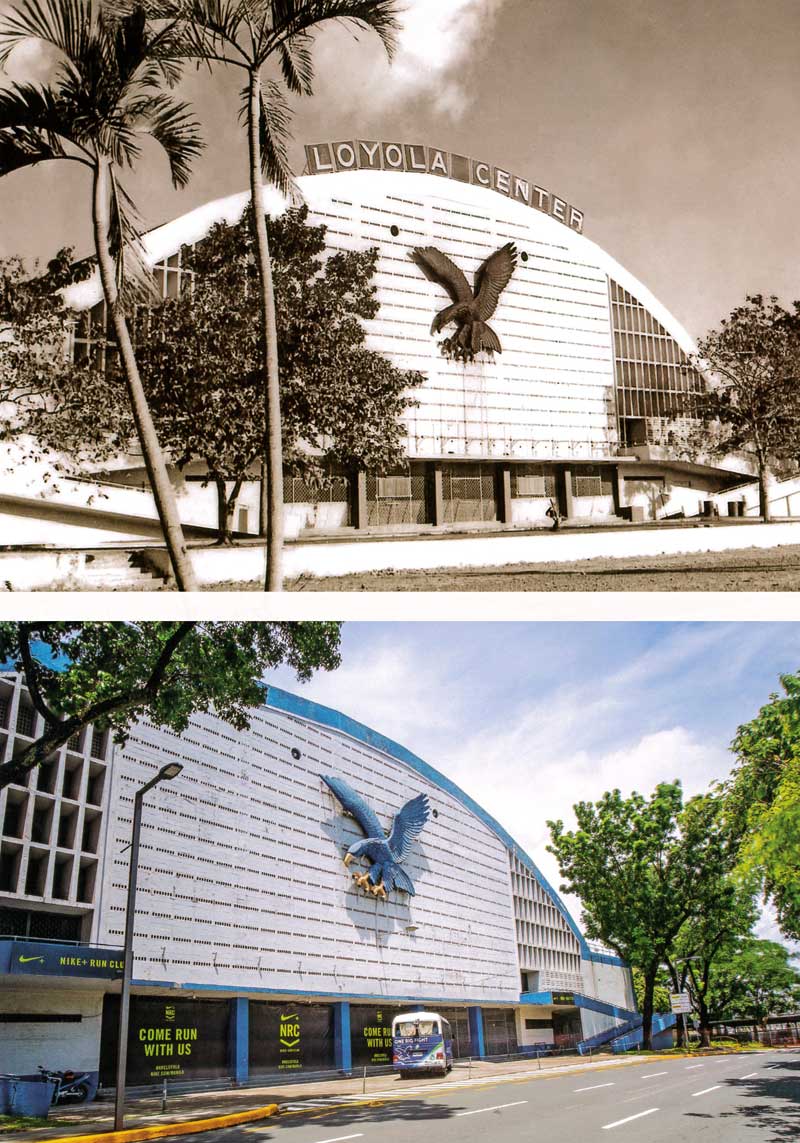
Ateneo’s Blue Eagle Gym is a Quezon City icon and has served the campus and its community for close to seven decades.
The reason people needed to communicate more often from the 19th century onwards was because more and more of them travelled. This was either for work, to go to war, to seek an education or for leisure. The third reason eventually became the most common, as travelers became tourists and tourists had to share their “wish you were here” messages to those unfortunately stuck home.
Images of foreign countries, exotic cities, academic grounds, strange peoples and places became shared at an increasing rate. The sharing of experiences in travel also came to be communicated in a more expansive sense through reports printed in newspapers and picture-based magazines like Life and Look.
Images of one’s towns, cities and countryside were also celebrated annually in yearbooks. The Fookien Times was a pioneer in this regard. Starting from 1926, Go Bieng Un, published The Fookien Times Yearbook (FTY) documenting the changes in the Philippines. Progress in the country was seen in the construction of new civic complexes, commercial buildings, and infrastructure. The FTY was a fixture in the Philippine publishing universe. It continues today as the Philippine Yearbook and it still relies on images as a key draw to readers.
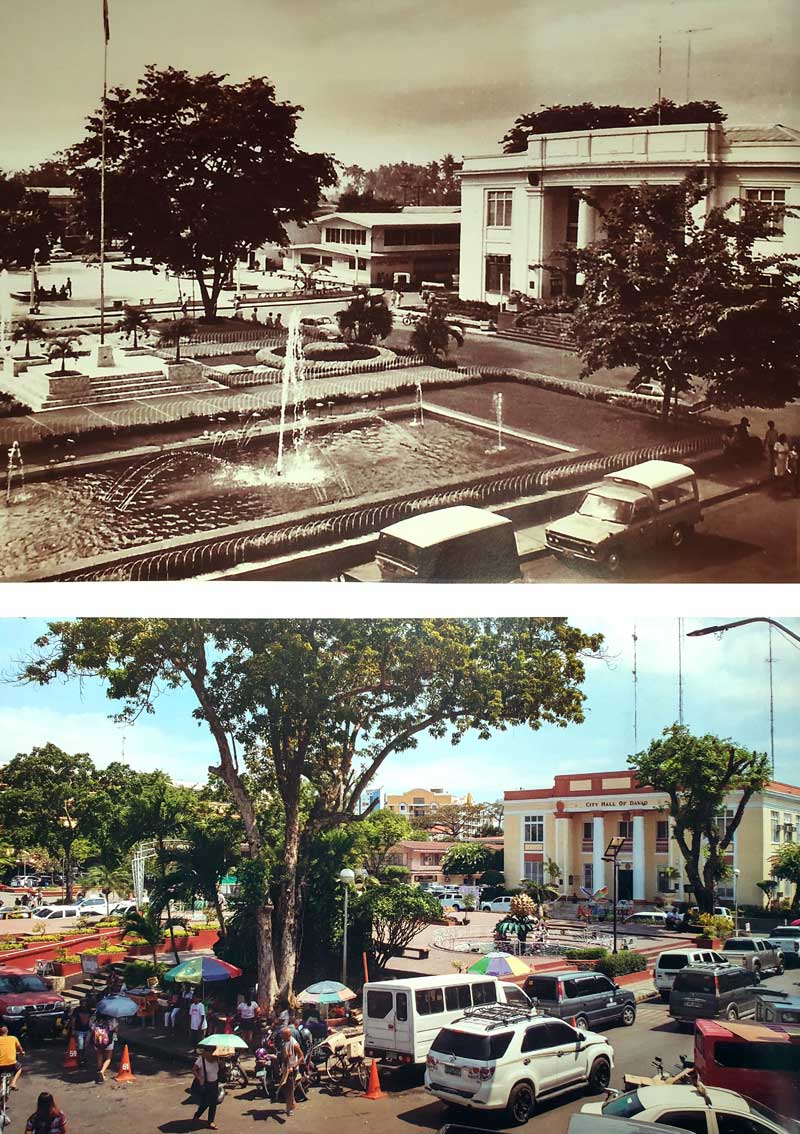
Davao’s City Hall was a pre-war landmark, which today is kept well-maintained, along with its large plaza.
In the 20th century, people’s memories of their travels, along with their own surroundings, became more and more defined by how these were depicted in photographs. Printed images also soon replaced paintings on walls in homes and institutions. They were less expensive to acquire and were reproduced in the thousands. Images in calendars also depicted places, landmarks, monuments and individual buildings. Picture calendars are still a fixture given around by corporations and individuals every Christmas and New Year’s season.
There was also the tourist brochure, a distinct type of publication, useful as a guide to travelers and as a souvenir for visitors…The brochures are picture heavy, with only enough text to paint broad descriptions of places to go, sites to see, markets to shop in, food to taste and festivals to participate in.
Postcards have gone the same way of maps and brochures. Tourist kiosks and bookstores previously had whole sections dedicated to these but now they are relegated on a small corner.
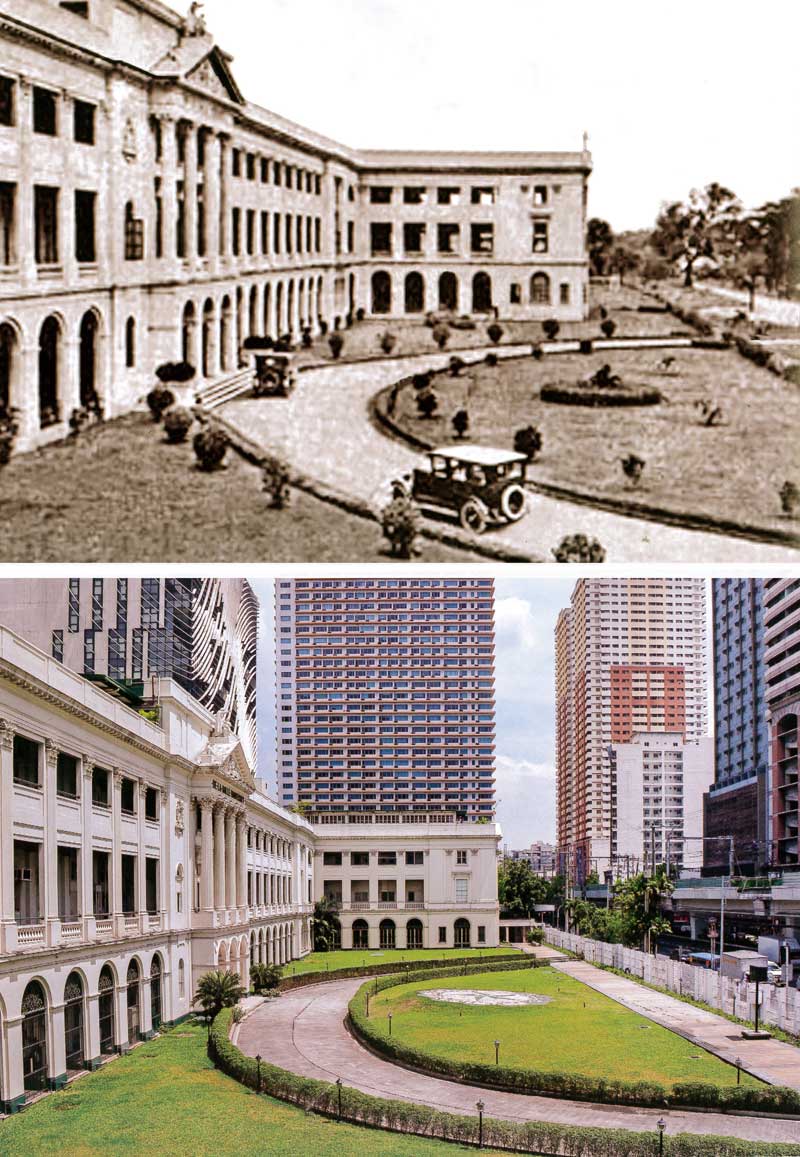
La Salle’s neo-classic main building on Taft Avenue has been brought back to its pre-war glory. Animo La Salle!
Today, everyone shares images via social media, email or in terabytes stashed away in (digital form). Generational preferences may change and future generations may shift completely to Virtual Reality, but images will still play a great part in the experience. Past images will also continue to be important as souvenirs of the past and benchmarks of change. They serve as reminders of what has disappeared, what been accomplished, where we spent time with those we loved, and what defined our lives at each point in time.
The world may change minute to minute, but we need not be shown the minutiae of everyone’s lives to improve our own. I do hope we rediscover the romance of the postcard in the near future, the impact of a well-selected image, the synergy of well-curated pictures complimenting well-edited text… Only then will we learn to see again, read again, and ultimately think again for ourselves.
* * *
Then and Now: The Philippine Yearbook 2019 Edition is available at National Book Stores and leading outlets nationwide. Feedback is welcome. Please email the writer at paulo.alcazaren@gmail.com.



















